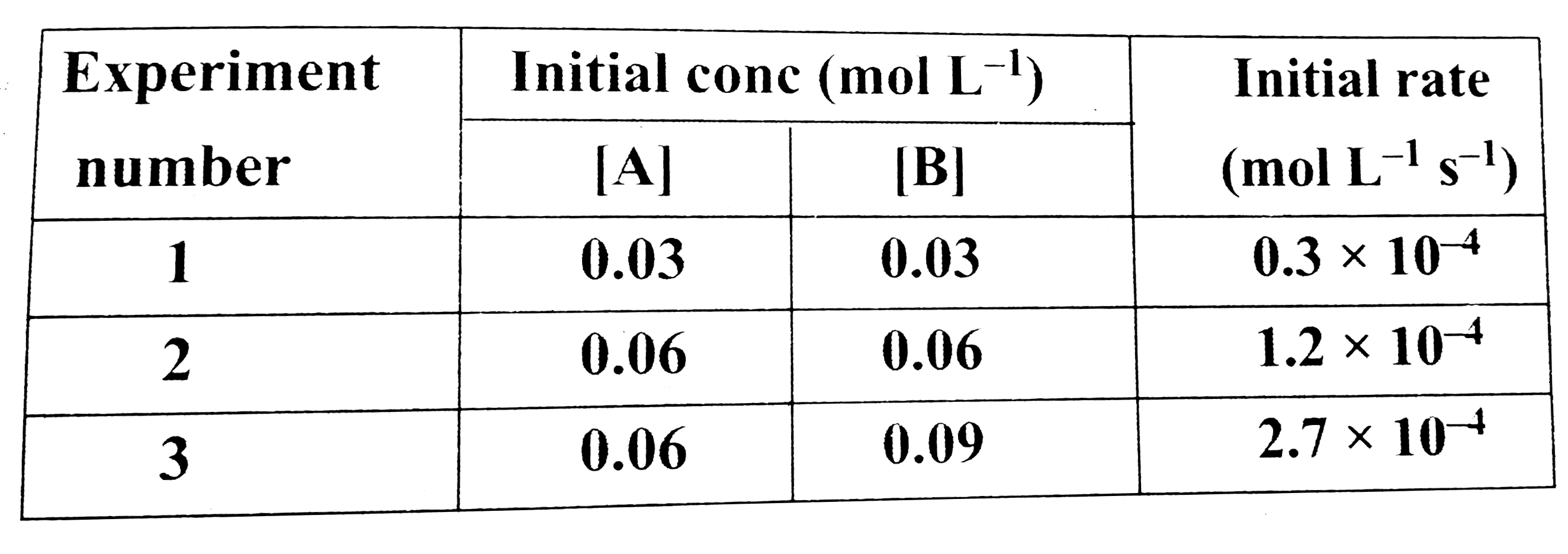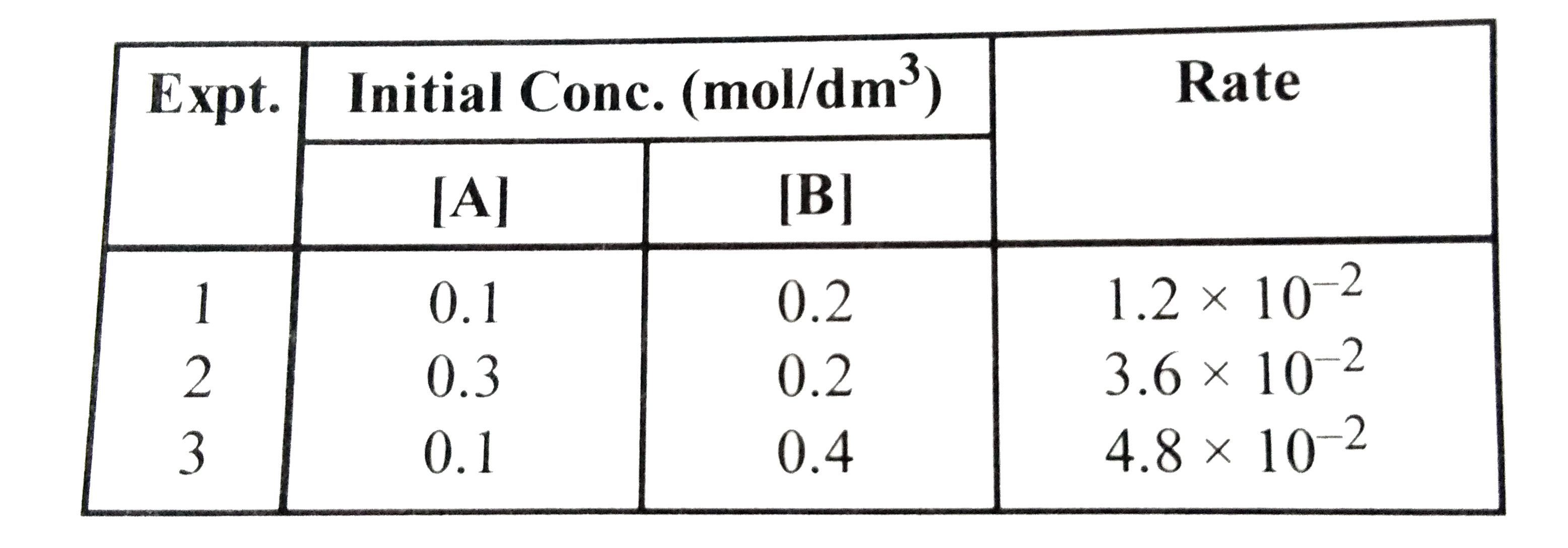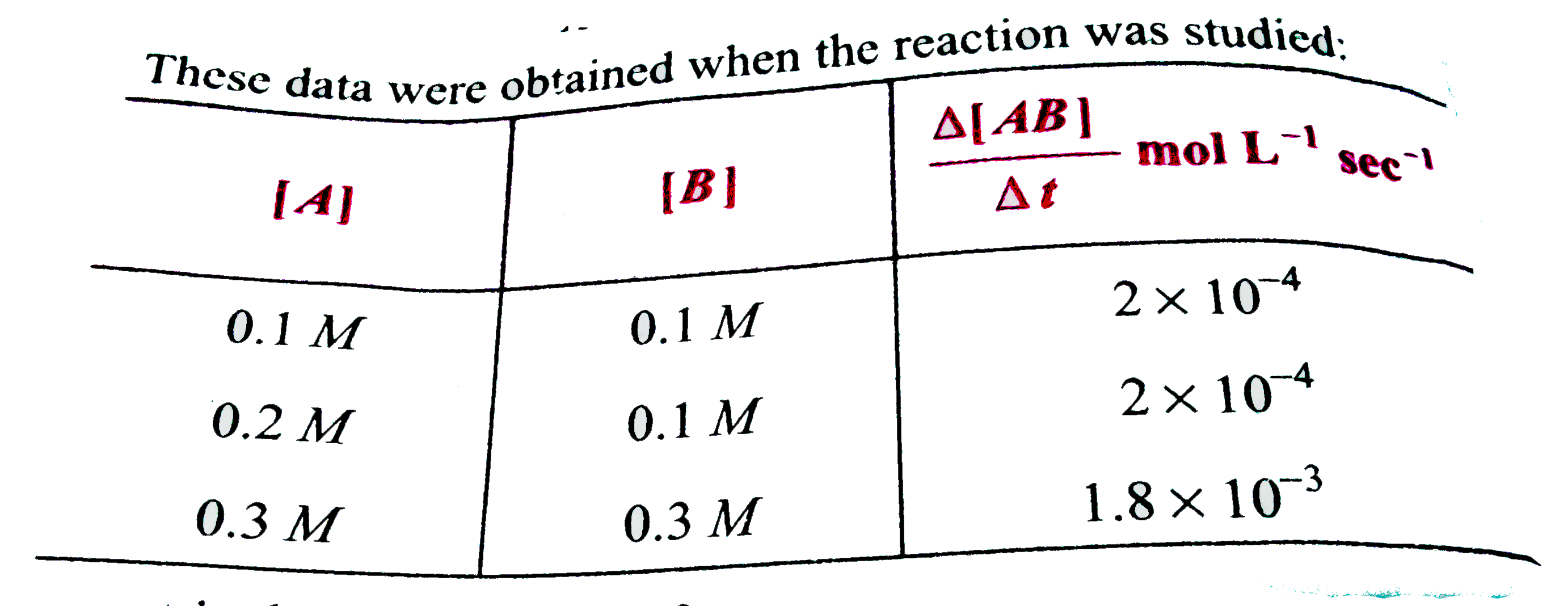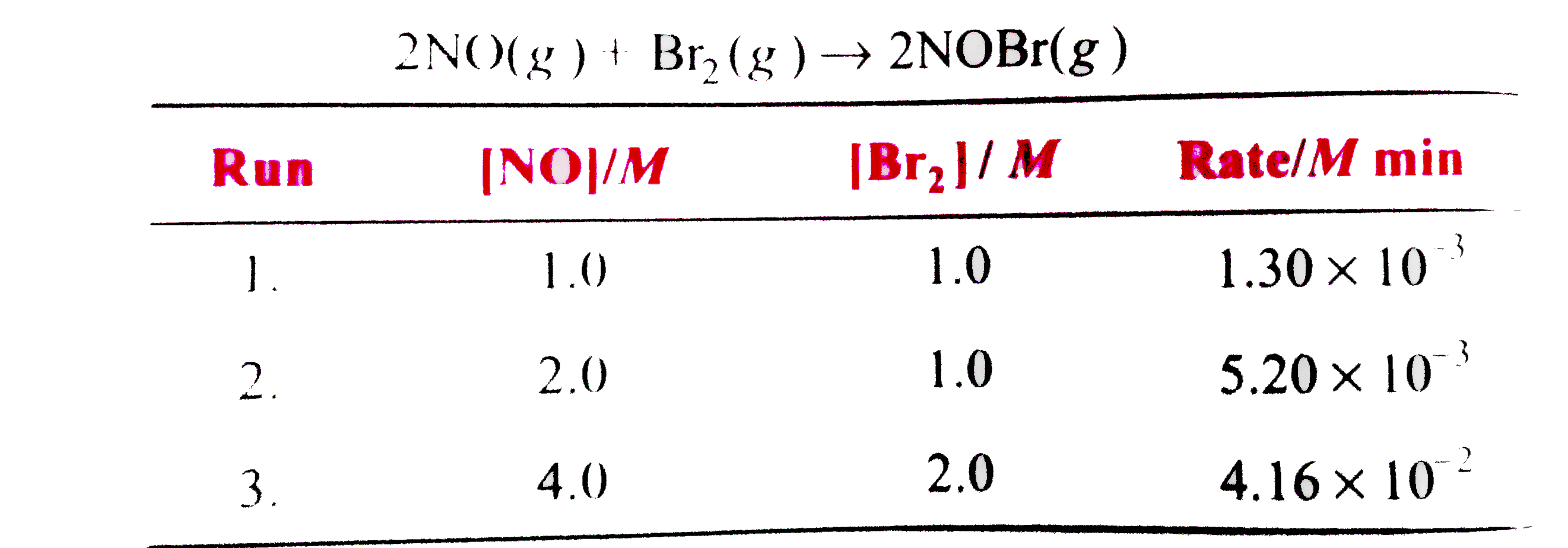For a reaction in which A and B form C, the following data were obtained form theee experiments:

What is the rate equation of the equation and what is the value of rate constant ?
Let the rate equation be k[A]x[B]y.
form experiment (1), 0.3×10−4=k[0.03]x[0.03]y …(i)
form experiment (2), 1.2×10−4=k[0.06]x[0.06]y …(ii)
1.2×10−40.3×10−4=[0.06]x[0.06]y[0.03]x[0.03]y
4=2x×2y ...(iii)
ismilarly, form experiments (1) and (3),
2x×3y=9 ...(iv)
Solving Eq. (iii) and (iv), we get
x=0,y=2
Rate equation , rate =k[B]2
Conisdering Eq. (i) again,
k=0.3×10−4[0.03]2=3.33×10−2mol−1Ls−1
Topper's Solved these Questions
- CHEMICAL KINETICSBOOK - CENGAGE CHEMISTRYCHAPTER - CHEMICAL KINETICSEXERCISE - Solved Example
52 Videos
- CHEMICAL KINETICSBOOK - CENGAGE CHEMISTRYCHAPTER - CHEMICAL KINETICSEXERCISE - Ex 4.1 (Objective)
9 Videos
- CARBOXYLIC ACIDS AND THEIR DERIVATIVESBOOK - CENGAGE CHEMISTRYCHAPTER - CARBOXYLIC ACIDS AND THEIR DERIVATIVESEXERCISE - Exercises Archives (Analytical And Descriptive)
34 Videos
- COORDINATION COMPOUNDSBOOK - CENGAGE CHEMISTRYCHAPTER - COORDINATION COMPOUNDSEXERCISE - Archives Subjective
18 Videos
Similar Questions
For the reaction A+B→C. The following data were obtained. In the first experiment, when the initial concentrations of both A and B are 0.1M, the observed initial rate of formation of C is 1×10−4mollitre−1minute−1. In the second experiment when the initial concentrations of A and B are 0.1M and 0.3M, the initial rate is 9.0×10−4molliter−1minute−1. In the third experiment when the initial concentrations of both A and B are 0.3M the initial rate is 2.7×10−3mollitre−1minute−1.
(a) Write rate law for this reaction.
(b) Calculate the value of specific rate constant for this reaction.
View SolutionThe following data were obtained during the first order thermal decompostion of SO2CI2 at a constant volume :

Calculate rate constant
View Solution
Knowledge Check
For the reaction between A and B
A+B→ product
the following rate data were obtained .

the reaction isAZero orderBfirst orderCsecond orderDthird orderThe following data was obtained for the reaction,
2X+Y→3Z

What is the proper rate expression?Arate =k[X][Y]Brate =k[Y]2Crate =[X]Drate =k[X]2Use the experimental data in the table to determine was studies

What is the rate equation for the reaction ?ARate= k[A][B]BRate= k[A]2CRate= k[B]DRate= k[B]2
For the non-stoichiometric reaction 2A+B→C+D, The following data were obtained in three separate experiments, all at 298 K.

The rate law for the formation of C is:
View SolutionWrite the rate equation for the reaction 2A+B→C if the order of the reaction is zero .
View SolutionThe following initial rate data were obtianed for the reaction
2NOg+Br(g)→2NOBr(g)

Determine the reaction rat law and the value of te rate constant.
View SolutionFor the non-stoichiometric reaction:
A+B→C+D, the following kinetic data were obtained in three separate experiments, all at 298K.

The order of the reaction is.
View SolutionThe reaction A+B→C has zero order. What is the rate equation ?
View Solution
